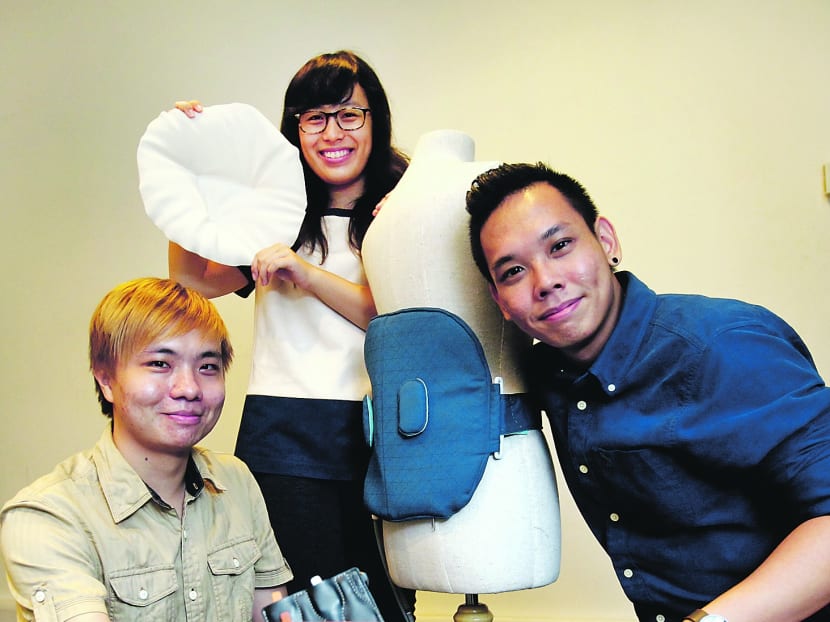Works by NUS industrial design students gain market traction
SINGAPORE — Nearly a month into his volunteering stint at the Muscular Dystrophy Association of Singapore, student Eason Chow Wai Tung has observed how caretakers sacrifice sleep due to time spent turning and moving patients, who cannot move on their own, for at least eight to 10 times in the night to relieve bed discomfort.

The works by the industrial design students from NUS have gone beyond being a prototype. Photo: Ernest Chua
SINGAPORE — Nearly a month into his volunteering stint at the Muscular Dystrophy Association of Singapore, student Eason Chow Wai Tung has observed how caretakers sacrifice sleep due to time spent turning and moving patients, who cannot move on their own, for at least eight to 10 times in the night to relieve bed discomfort.
This prompted Mr Chow, 25, to put what he learnt as an industrial design student at the National University of Singapore’s (NUS) School of Design and Environment to good use — he set out to create a device that could move a patient in a safe, efficient and inexpensive way. “The solution was always about a big bed (with) many complicated mechanisms ... The patients’ rooms I visited are generally smaller, so (it’s not possible to have) such a big bed.”
The result is Flipod, a compact inflation system that can be strapped onto one’s back to relieve respiratory and bed discomfort in non-ambulant patients. Mr Chow’s graduation project in collaboration with the Singapore General Hospital’s Department of Physiotherapy was fully funded by NUS’ Medical Engineering Research and Commercialisation Initiative, which aims to introduce innovative medical devices to the market. It is currently undergoing a patent-application process.
Flipod is among several projects created by NUS’ Division of Industrial Design students that have gone beyond being a prototype to gaining traction in the commercial market.
For example, graduating students Vick Cai, Sylvia Ang and Goh Hong have raised US$15,041 (S$18,800) through crowd-funding site Indiegogo in only three months to manufacture their creation, Keyper, a flat leather key holder that fits comfortably in a pocket, for sale. The project was part of the university’s Launchpad scheme, which requires students to launch their designs for sale or crowd-funding. So far, Keyper has received 350 orders from 255 funders, with 70 per cent of buyers coming from outside Singapore.
Another creation that has hit the market is Crinkle, a porcelain dish made using fabric instead of plastic as the “mould” to give it a unique texture. Created by second-year student Lee Han Xi, 21, Crinkle retails for S$245 on online store Haystakt.
Asked whether she felt the Singapore market was ready to embrace local design, Ms Lee said: “Artisanal products are very new, but have gained popularity in recent years. I think it’s challenging to reach out to the local market as it is very small so, probably, people overseas can appreciate such designs more.”
Associate professor Yen Ching Chiuan, NUS’ Head of Division of Industrial Design, said: “Industrial design is about making observations and identifying the fundamental problem. It is important as, many times, we think some situations are problems but, actually, they are not. As industrial designers, we see things from a designer’s eye to provide unique solutions to industry problems.”
Through the school’s platforms such as Making Make for artisanal products such as Crinkle, students are provided with a proper environment and trained to take ownership of their work, he added.






